Ahoy, I’m Jules! I’m one of the summer 2023 Bronze Door Society archaeological conservation interns here at The Mariners’ Museum and Park. While my primary project this summer is working on over 300 timbers from the 18th century merchant ship Princess Carolina, I’m using my free time to learn as much as possible about the rest of the Museum. On my first day at The Mariners’, I received a tour of the entire Museum from one of our docents, Drew. After hours of laughing, chatting, and learning through the exhibits, our tour concluded at the International Small Craft Center (ISCC).
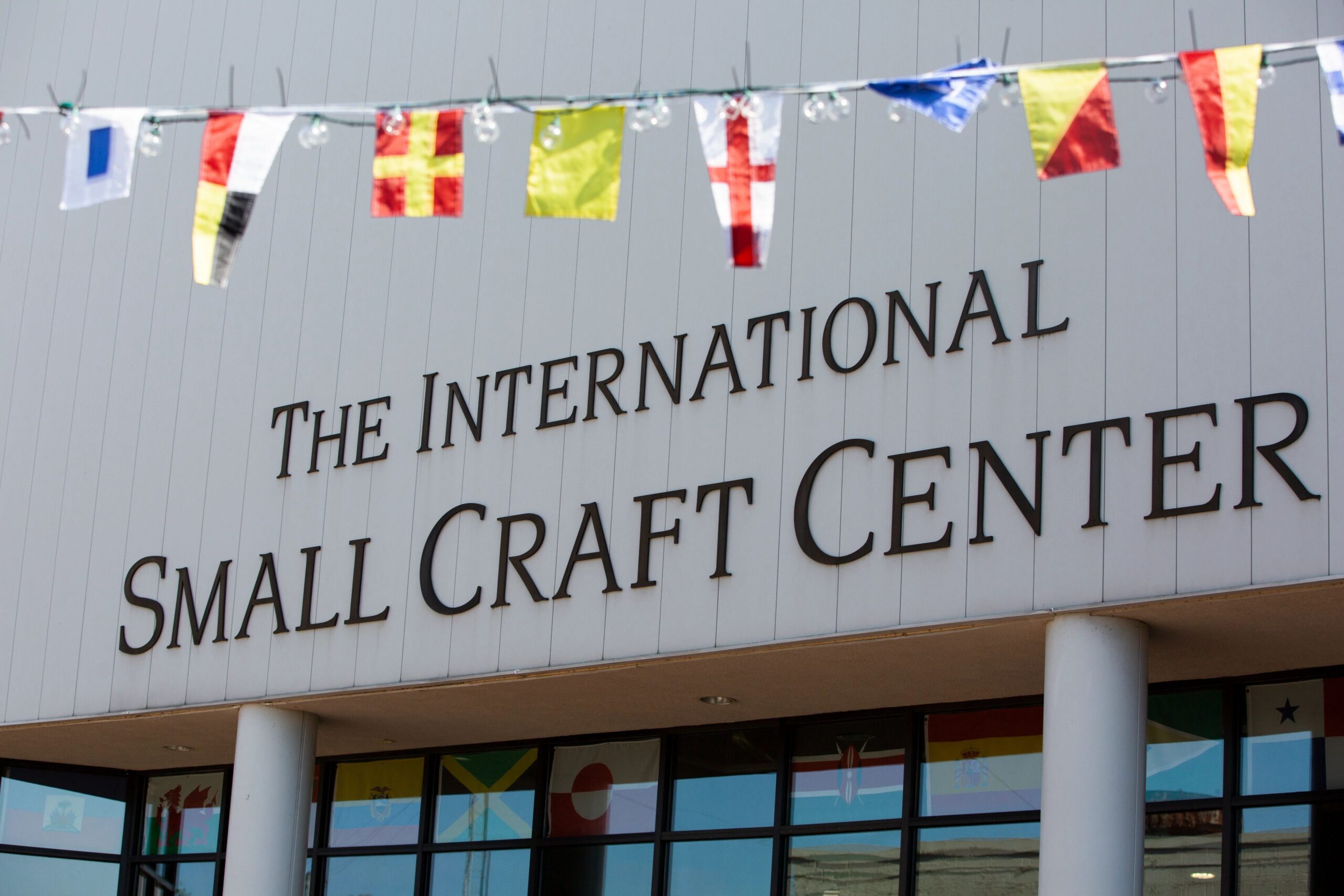
In a gallery separated from the main body of the Museum, there is a collection totalling over 150 small watercraft from 42 different countries across 6 continents. At first glance, it was almost overwhelming – the various shapes, colors, and striking features – it’s difficult to know where to look first! But with Drew’s guidance and some additional research on my end, the ISCC quickly became my favorite spot in the entire Museum. Let me show you why by highlighting some of my favorite vessels from each exhibit section on display. You can learn even more about these vessels and where this information comes from by visiting the ISCC in person or viewing its website and catalog.
CULTURE:
The purpose, design, materials, and actual construction techniques by which a boat is built are heavily influenced by the culture(s) of their makers. These choices can vary within and between cultures, but can provide information about the values, ideologies, and motivations of their larger society.

For the Ceremonial Canoe (Agai-ni-waiau) from San Cristobal, these aspects manifest in both its practical and ceremonial uses. Tuna and tuna fishing are of great dietary and spiritual importance in Solomon Islands culture, and the agai-ni-waiau reflects both through its use in boyhood-to-manhood transitional rituals. This rite of passage concludes with the boy setting out with experienced fishermen to catch tuna, and returning as a man.
MATERIALS:
As previously mentioned, the materials used to build watercraft can vary drastically, but still tell us a lot about the local collective knowledge. Additionally, what a boat is made of tells us about the environment at the time, as builders would traditionally use whatever materials were available in their immediate environment.
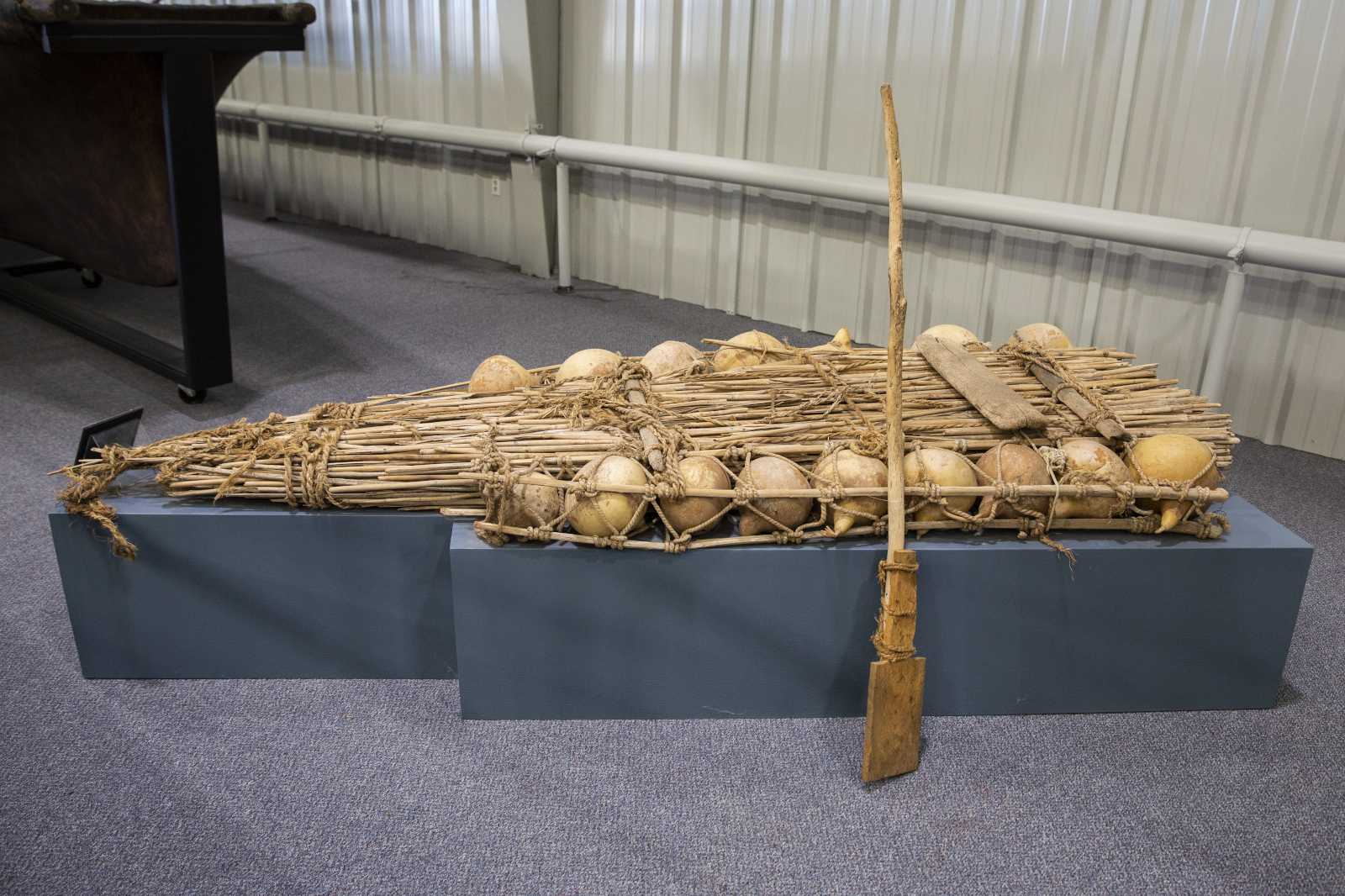
Enter the Chatti Raft. In the Arab Republic of Egypt, papyrus reeds are plentiful along the Nile River. These rafts could be quickly constructed using these reeds, but after several uses would require repair or replacement due to the reeds becoming waterlogged. The gourds along the side of the raft were added to increase the raft’s buoyancy and prolong its use.
SUSTENANCE:
Everyone has to eat, and this drive is a primary motivator for watercraft construction. There might even be more types of craft created for this purpose than anything else! Different marine environments require different materials and structural elements in order for the vessel to be as effective as possible for gathering food.

The shape, size, and design of this Towy River coracle (cwrwgl) is entirely centered around sustenance. Since the 7th century, Welsh fishermen have strapped the coracle to their backs and set off angling for salmon and sea trout. While the pear-shaped body of this vessel is better for navigating the fast-flowing rivers in southwest Wales, fishermen also carried clubs to stun the large, wriggling fish to prevent their momentum from tipping the small, flimsy vessel.
HYBRID & EXPERIMENTAL:
Some vessels are designed for purely experimental reasons – to test new technologies, materials, ideas, or construction techniques. Scientists even build craft to test new theories!

Despite its resemblance to a giant golf ball, Turtle is actually a two-person (pilot and observer) submersible that successfully traveled to 10,000 ft below sea level off the coast of Hawaii in 1980. One of three, Turtle was created as part of the first program to use manned underwater exploration vessels, and was continuously used for deep-sea salvage work and experimental sonar programming into the 1990s.
SURF’S UP:
They don’t look much like boats, but surfboards are watercraft with a lot of variation and cultural significance. Surfboards have a long history of use exclusively by Hawaiian royalty, and were patented by Wisconsinite Tom Blake in the 1930s. Over thousands of years, the materials, design, and uses of surfboards have evolved, and is a perfect example of the ways things can change when people come together with a common purpose or passion.

Peruvian Seahorses (caballito de totoras) have served the dual purpose of surfboard and fishing craft for thousands of years. The curved bow of the craft breaking through heavy waves resembles a galloping horse carrying the riders through the sea, with the riders either sitting, kneeling, or standing in the seat. These seahorses can be ridden for several months before the flexible reeds they are almost entirely made of become waterlogged and need replacing.
ENVIRONMENT:
Vessels can only be useful if they are appropriate for their maritime environment, and in turn a vessel’s construction can reveal a lot about both the needs of the crafters and the environmental conditions that the vessel is used in.

Countless sampans (hung-t’ou) crowd the harbors of Shanghai, China and provide both shelter and income for the families who own them. Sampans are propelled from the stern by a long oar (yuloh) to serve as water taxis, and also provide a space for their owners to cook, sleep, and take refuge from the sun or rain.
SHAPE:
A vessel’s shape is its most defining feature. Is it symmetrical? Does it have a cabin? How long is it? These details, along with others, reveal what a boat is and what it’s capable of doing, and also provide insight into the human activity taking place aboard.

This dugout canoe from the Democratic Republic of the Congo is almost 16 feet long, but not even a full foot wide. It’s so narrow that the user can’t even sit – the canoe is piloted standing up with a long poll! Despite being standing room only, its symmetry means that it can be easily poled in either direction, as it lacks a clear bow and stern.
CONVEYANCE:
When we think of boats, conveyance is probably the number one function that comes to mind. The act of transporting people and goods from one place to another also allows for more communication and transmission of cultural knowledge between individuals and communities.

Gondolas like this one are emblematic of Italy, and especially of daily life in Venice. Gondolas are still used everyday as water taxis for Venetians and tourists, and also for things like delivering mail and providing emergency services. Gondolas are particularly interesting as they are one of the only vessels intentionally built asymmetrically to account for the gondolier’s weight and movement.
PLEASURE & ADVENTURE:
Life of Pi, Moana, and Treasure Planet are amongst countless stories that place boats at the center of the adventure. Getting out on the water is a favorite pastime for many people, and activities like sailing, kayaking, fishing, and exploring are incredibly popular internationally.
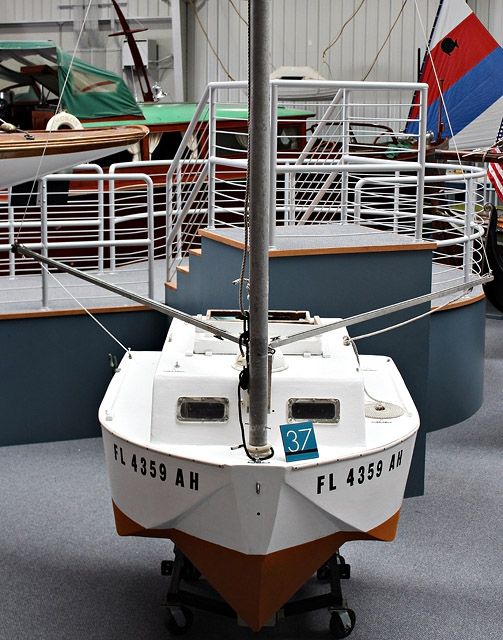
Coming in at just under 6 feet long and 5 feet wide, April Fool sailed across the Atlantic Ocean in 1968 – a total of 4,480 miles in just 85 days. The captain and sole passenger Hugo Vihlen ate, drank, slept, and lived in the incredibly small cabin of this vessel, and until 1993 held the world record for smallest boat to cross the Atlantic.
COMPETITION:
The need for speed has dramatically influenced boat design over the past century. Boat racing is an incredibly popular pastime, and is subject to a host of regulations depending on the vessel to make these competitions as fair as possible. We’ve even got an entire exhibit about it here at the Museum – Speed and Innovation in The America’s Cup!
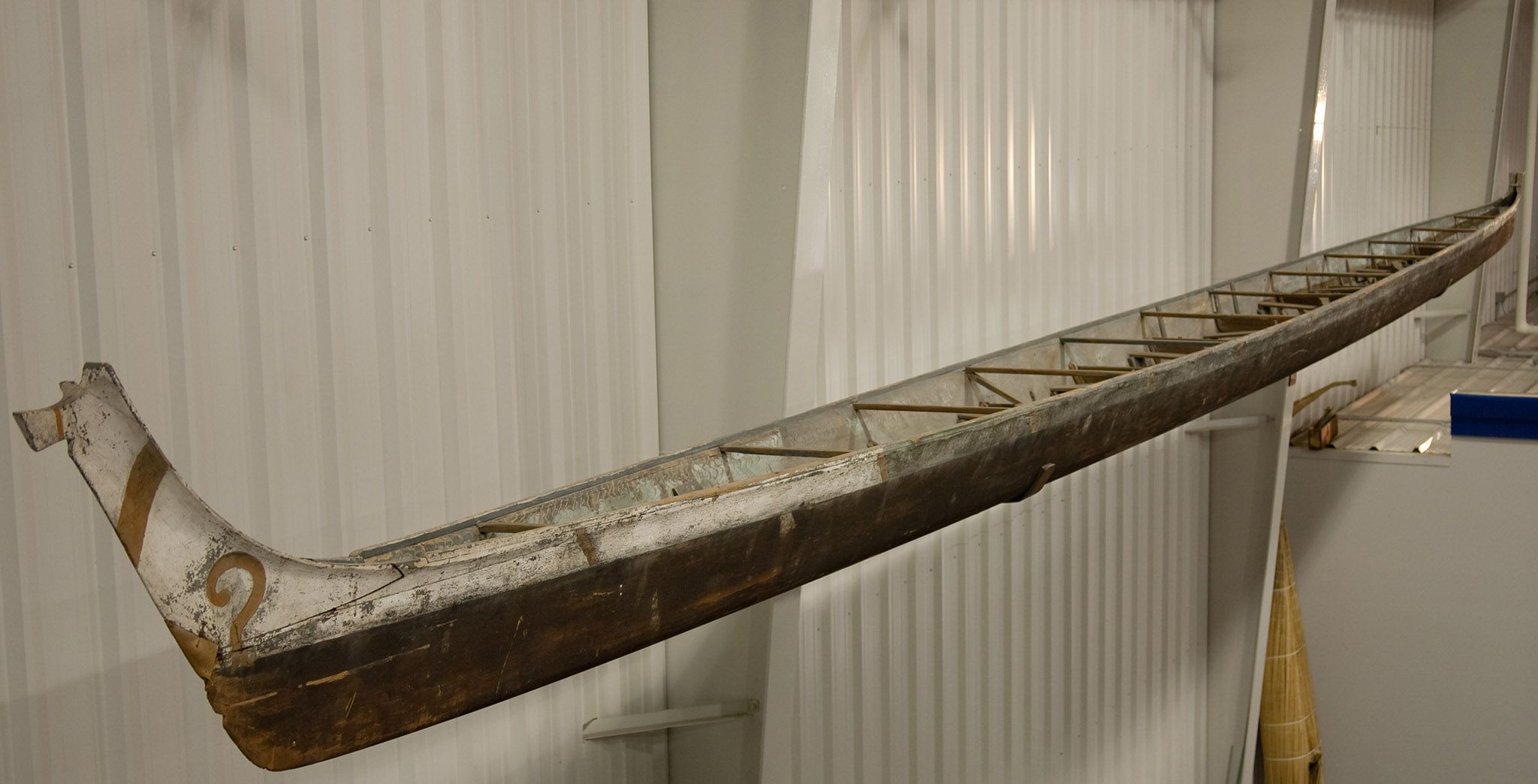
First Nations people engaged in canoe racing as a way to promote their culture and strengthen community connections. Question Mark, this Salish Racing Canoe from the Swinomish Nation in what is now the state of Washington, is 52 feet long and holds 11 people! This canoe is designed based on traditional Northwest coast canoes, but its proportions are based on Euro-American rowing vessels.
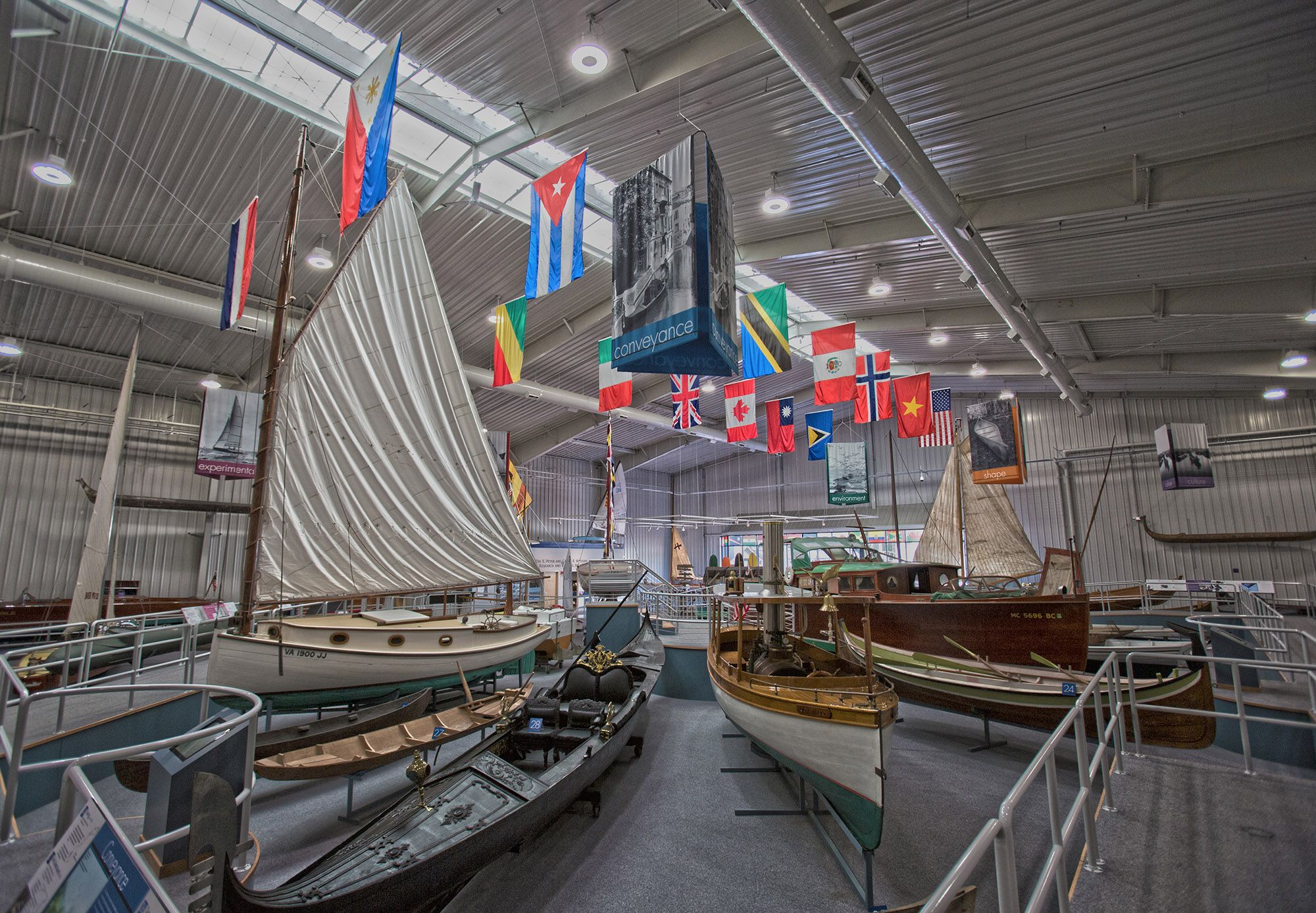
The International Small Craft Center represents the collective knowledge and personal expressions of the creators of these watercraft, and perfectly encapsulates the mission statement of The Mariners’ Museum and Park: to “connect people to the world’s waters, because through the waters – through our shared maritime heritage – we are connected to one another” (https://www.marinersmuseum.org/about-the-mariners/). That’s why it’s one of my favorite spots in the entire Museum, and why this blog was curated. At the Museum, and especially in the ISCC, we are all mariners, and get to become part of the lives and stories of these vessels.
Resources:
Check out the International Small Craft Center’s website for more information about the gallery: https://iscc.marinersmuseum.org/
The information in this blog was adapted from the information available about the vessels from the ISCC’s catalog. Learn more about the ten vessels highlighted here and the additional 140 in the collection here: https://iscc.marinersmuseum.org/explore/